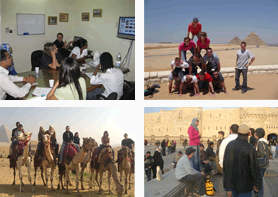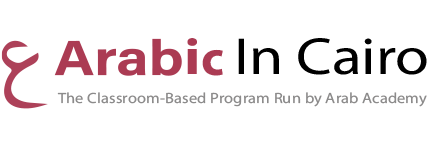In the past 12 months,
we had students from the following countries:
Learn Arabic in Egypt
Our Arabic immersion programs allow students to take the following courses to gain a deeper level of comprehension in the Arabic language:

Some of Our Clients
Arabic Singing
Here is a video showing students singing an Arabic song at their farewell party at Arab Academy. Singing allows students to showcase their skills in the Arabic language while helping them gain a better understanding of the Arabic culture. Our Arabic immersion programs help with comprehension, pronunciation, and more.
A JOURNEY OF ARABIC LANGUAGE MASTERY
Our journey began in 1997 when the Egyptian government certified and licensed us. Since then, we have positioned ourselves as the leading provider of Arabic language and culture instruction. We are the world’s pioneer in Arabic e-learning, dedicated to delivering online Arabic language courses through the integration of technology and cutting-edge teaching methods.
At Arab Academy, our mission is to empower students with the skills and knowledge to communicate effectively in Arabic and promote academic excellence through professionally developed Arabic language programs. We are committed to providing enriching and unforgettable learning experiences where students can quickly improve their Arabic, grow in confidence, and develop personally in the modern world.
OUR VALUES
Learn Arabic in Cairo
Enjoy learning in this classroom-based program run by ArabAcademy
We offer comprehensive Arabic immersion programs to facilitate quality learning experiences for students. To learn more about our Arabic in Cairo program, contact our team today.































































 Because no one size fits all, we help our students flourish inside and outside of the classroom and reach their full potential by giving them weekly personalized feedback and one-on-one guidance. Our team works closely with each student to identify their unique strengths and areas for growth, providing a tailored learning environment.
Because no one size fits all, we help our students flourish inside and outside of the classroom and reach their full potential by giving them weekly personalized feedback and one-on-one guidance. Our team works closely with each student to identify their unique strengths and areas for growth, providing a tailored learning environment.
